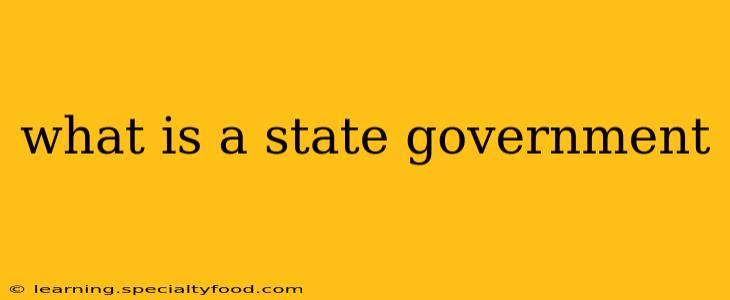State governments are the governing bodies of individual states within a federal system, like that of the United States. They possess significant autonomy and responsibility within their defined borders, operating independently yet in coordination with the federal government. Understanding state government is crucial for comprehending the broader workings of the American political system and the services we receive daily. This article will delve into the intricacies of state governments, exploring their structure, functions, and the crucial role they play in our lives.
What are the different branches of state government?
Most US state governments follow a structure mirroring the federal government, incorporating three distinct branches:
-
Legislative Branch: This branch is responsible for creating laws. In most states, this is a bicameral legislature, meaning it consists of two houses: a Senate and a House of Representatives (or Assembly). These bodies debate, amend, and pass bills that become state laws.
-
Executive Branch: The executive branch enforces the laws passed by the legislature. The head of this branch is the Governor, who appoints various officials, manages the state budget, and oversees the day-to-day operations of state government. The executive branch also includes numerous agencies and departments responsible for specific functions like education, transportation, and public health.
-
Judicial Branch: The judicial branch interprets the laws passed by the legislature and ensures they are applied fairly. This branch consists of state courts, ranging from lower courts to appellate courts and a state supreme court. The state supreme court is the highest court in the state and its rulings are binding within the state's borders.
How does a state government differ from the federal government?
While mirroring the federal government's structure, state governments have distinct areas of responsibility:
-
Reserved Powers: The Tenth Amendment to the U.S. Constitution reserves powers not explicitly granted to the federal government to the states. This includes areas like education, public health, and intrastate commerce (commerce within the state).
-
Limited Jurisdiction: State governments operate within the confines of the U.S. Constitution and federal laws. Federal laws supersede state laws in cases of conflict.
-
Varied Structures: While most states follow the three-branch model, there are variations in the specifics of their legislative and judicial systems. For instance, the size and organization of state legislatures differ significantly.
-
Direct Democracy Elements: Some states have mechanisms for direct democracy, such as initiatives and referendums, allowing citizens to directly participate in lawmaking.
What are the main functions of a state government?
State governments perform a wide array of crucial functions that directly impact citizens' daily lives:
-
Education: State governments are primarily responsible for funding and regulating public education, from kindergarten through higher education. They set curriculum standards, allocate funding to schools, and oversee teacher licensing.
-
Public Health: State governments play a critical role in public health, regulating healthcare providers, monitoring disease outbreaks, and implementing public health initiatives.
-
Transportation: State governments manage and maintain state highways, bridges, and other transportation infrastructure. They also regulate transportation within the state.
-
Public Safety: State governments are responsible for maintaining public safety through law enforcement agencies, correctional facilities, and emergency response systems.
-
Environmental Protection: State governments play a crucial role in environmental protection, regulating pollution, managing natural resources, and enforcing environmental laws.
What is the role of a state governor?
The Governor is the head of the state's executive branch, holding significant power and responsibility. Key roles include:
-
Veto Power: The Governor can veto bills passed by the legislature.
-
Budget Authority: The Governor typically plays a major role in creating and proposing the state budget.
-
Appointment Power: The Governor appoints numerous state officials and judges.
-
Commander-in-Chief of the State National Guard: The Governor commands the state's National Guard.
How are state governments funded?
State governments primarily receive funding through:
-
Taxes: State income tax, sales tax, and property tax are major revenue sources.
-
Federal Grants: The federal government provides grants to states for various programs.
-
Fees and Licenses: Fees and licenses associated with various services generate revenue.
Understanding state governments is critical to understanding the complexities of the American political system. Their powers, responsibilities, and interactions with the federal government significantly shape our lives and communities. This nuanced understanding empowers citizens to engage more effectively in the political process and advocate for their interests.
